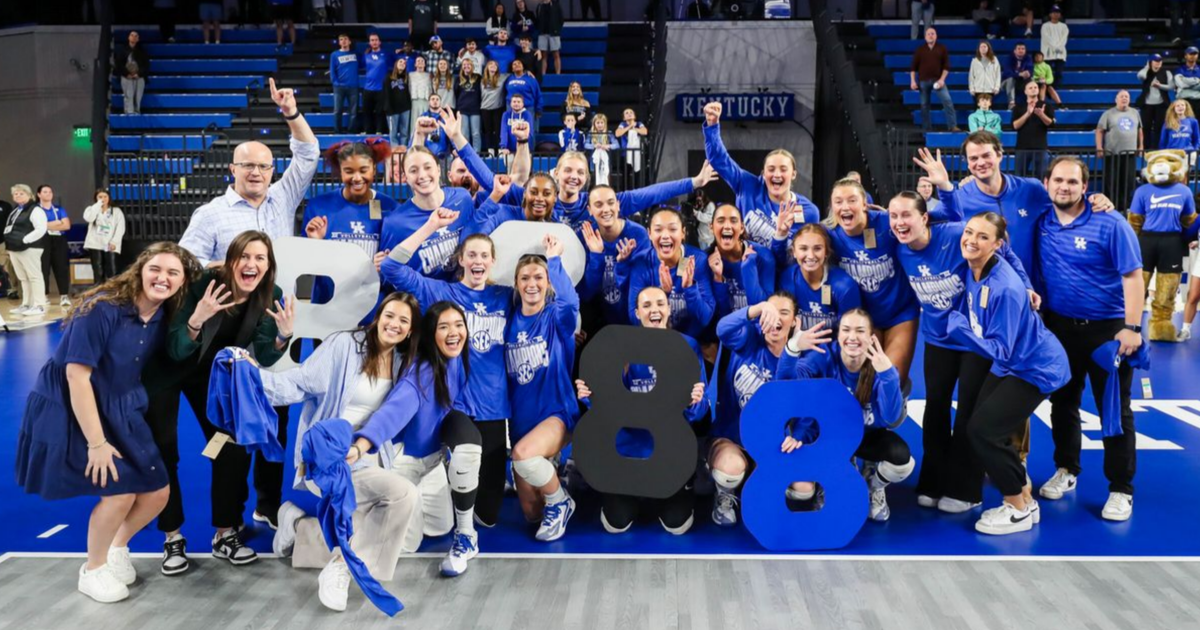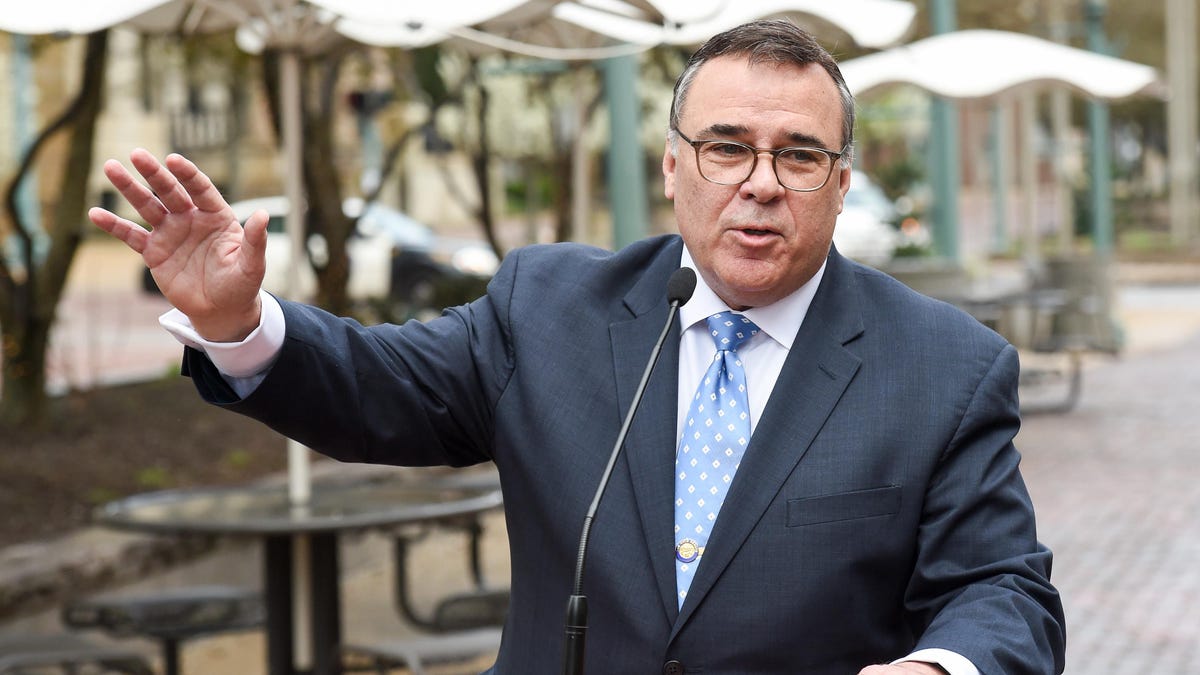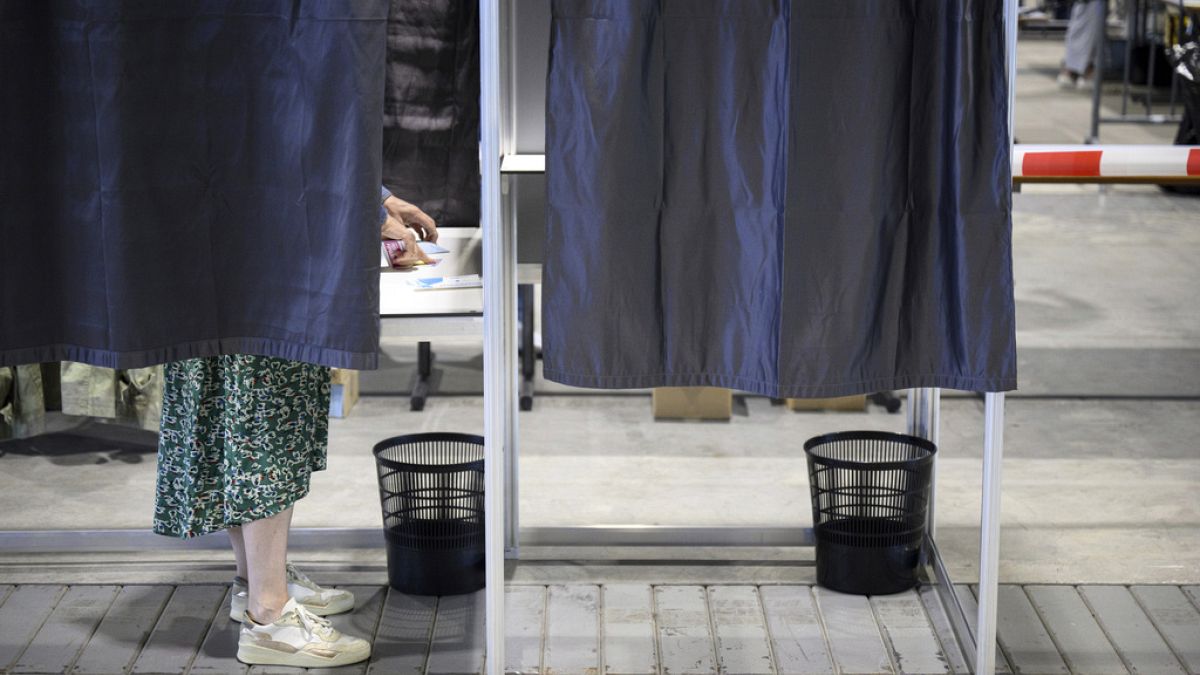Kentucky
Kentucky Supreme Court hears arguments in redistricting lawsuit
/cloudfront-us-east-1.images.arcpublishing.com/gray/NMVT2GDFVFM4NG36OJSKYJBYBU.png)
FRANKFORT, Ky. (WKYT) – Kentucky’s Supreme Court heard arguments on gerrymandering Tuesday.
Democrats believe Republicans violated the state constitution when setting new district lines.
Political experts say, while not surprising, cases like these have become part of a national movement.
The congressional district and state House district maps are at the center of this lawsuit.
Districts, which define the area an elected official represents, are adjusted every ten years by the Legislature to reflect changes in population and often favor the party in power.
“You know our constitution asked us to pay homage to the proposition that counties shall not be split. We all agree that no longer works. It doesn’t matter if the Democrats did it when, then and now ya’ll are doing it now. It just no longer works,” said Justice Michelle Keller.
One map puts Frankfort in the same district as most of western Kentucky. It’s represented by prominent GOP Congressman James Comer.
“Even if we did switch to a map that didn’t have that Comer Hook, stretching from West Kentucky up to Franklin County, it’s really unlikely it would make any difference to our congressional delegation,” said Dr. Stephen Voss, an Associate Professor of Political Science at the University of Kentucky.
Democrats say the other map breaks up more Democratic areas like Lexington for representation in the state House. They claim both maps give the GOP an unfair and unconstitutional advantage.
Republicans maintain they followed the law. Their lawyers argue it’s just a Democratic reaction to being the super minority.
“The lawyers here and elsewhere are hunting big game. They’re looking down the road to a national Supreme Court case that permanently changes how districts get drawn in states around the country. So, really, Kentucky is just a small battle in a much bigger war,” Dr. Voss said.
Some states have non-partisan commissions that draw up districts. So far, Kentucky hasn’t adopted that method of drawing the lines.
Copyright 2023 WKYT. All rights reserved.

Kentucky
Senior Class Shines on Senior Day as No. 12 Kentucky Captures Eighth-Straight SEC Title

Thanks to a balanced effort from the senior class, the No. 12 Kentucky Volleyball team captured at least a share of an eighth-straight Southeastern Conference championship on Sunday afternoon, downing Arkansas in straight sets (26-24, 25-20, 25-13) on Senior Day inside Historic Memorial Coliseum.
The Kentucky seniors have been an integral part of the program since they first stepped on the court, a theme that continued in the match against the Razorbacks as seniors Emma Grome, Megan Wilson, Eleanor Beavin, and Erin Lamb all played key roles in the Cats’ sweep of Arkansas.
Following the match, UK head coach Craig Skinner attributed the team’s success to a staff dedicated to preparation, and a team of athletes who embraced the challenge involved in competing for a championship.
“I’ve gotta give a lot of credit to our staff,” Skinner said. “Our staff was unbelievable this year, Ben (Josephson), and Merideth (Jewell), and Madison (Lilley) did a hell of a job coaching this team and getting them prepared to play against great competition, so that’s the first thing.
“And the second thing, when you recruit athletes to compete for championships they know the expectations and the standards and that’s what they want. We’ve been shooting for the top ever since I’ve gotten here and we don’t wanna go anywhere else.”
Offensively, Grome paced the Kentucky attack to 40 total kills on a .312 hitting clip. Four Wildcats totaled six or more kills, led by sophomore Brooklyn DeLeye who finished with 13. It was Wilson who stole the show Sunday, however, as the senior right side found the floor with 12 kills on a sweltering .500 clip. In her second match back from injury, Lamb added seven kills to the winning cause and Jordyn Dailey totaled six.
Kentucky stifled the Razorbacks at the net as they racked up 8.0 rejections and held Arkansas to .130 hitting. In the third and final set, Arkansas totaled only four kills with three errors as the Cats coasted to the set and match victory. Brooke Bultema led the way with 5.0 blocks, Wilson had 4.0, Dailey finished with 3.0, and Grome and DeLeye each had a pair.
Molly Tuozzo continued to anchor the back line as she totaled 19 digs to lead all players. DeLeye added 11, Grome had 10, and Beavin had seven.
Beavin made her biggest impact from behind the service line, as the senior served up a match-high four aces. Lamb and DeLeye each had two of their own and Grome finished with one.
With the win, Kentucky improves to 19-7 on the season and 13-2 in the SEC. The victory locked up at least a share of the SEC title for the Cats for a program-best eighth-consecutive year.
UK will conclude the regular season on Wednesday as they travel to Columbia, Missouri for a matchup with No. 25 Missouri. If Kentucky leaves Columbia with a victory, they will claim the conference championship outright as Florida and Texas sit a game behind them in the standings. First serve against the Tigers is set for 7:00 pm ET.
Club Blue is the official collective partner of the University of Kentucky. Support your volleyball team today.
Kentucky
Former Sheriff Shawn ‘Mickey’ Stines indicted for murder of Kentucky judge

Two months after video showed him shooting a Kentucky judge at point-blank range in his chambers, former Sheriff Shawn ‘Mickey’ Stines has been indicted for murder.
The indictment, announced jointly by state and local prosecutors, charges Stines with shooting and killing Letcher County District Court Judge Kevin Mullins. Stines is scheduled to appear for his arraignment on Monday, Nov. 25.
RELATED STORY | Video shows Kentucky judge try to hide as he’s gunned down in chambers
At a probable cause hearing in October, prosecutors showed a silent video that appeared to show Stines walking into the judge’s chambers with a weapon and firing multiple times at the victim, who frantically tried to escape under his desk.
Stines, who was sheriff at the time of the shooting, resigned on Oct. 1, hours before appearing in court to plead not guilty to murder charges.
RELATED STORY | Kentucky sheriff charged with fatally shooting a judge pleads not guilty in first court appearance
Investigators have not offered any potential motive for the murder. Those who knew Stines and Mullins said the two had worked together for years and were friends.
To date, prosecutors have not announced whether they will seek the death penalty.
This story was originally published by Lauren Silver at Court TV.
Kentucky
BY THE NUMBERS: Texas 31, UK 14

Kentucky played Texas competitively during stretches of Saturday’s game in Austin but an ugly stretch in the second quarter gave the Horns a lead they would never relinquish.
Here are some of the key numbers that tell the story of what happened in the game.
209 … More yards for Texas than Kentucky. That’s not surprising but speaks to the challenge. The Horns had 441 yards of offense with a lot of balance (250 on the ground, 191 through the air) while the Cats mustered only 211 yards of offense, almost all of which was passing.
160 … The total passing yards for Cutter Boley. The freshman was 10/18 for 160 yards and an interception. Boley entered the game because Brock Vandagriff was struggling and he did a lot to impress. He saw the field well, made some confident reads and delivered catchable balls down the field.
158 … Rushing yards for Texas’ Quintrevion Wisner. The Longhorns rushed for 250 yards on the game.
25:30 … Time of possession for Kentucky in the game. Any upset bid would have been aided by Kentucky controlling the ball more than Texas. That did not happen.
20 … Carries for Kentucky running backs Jamarion Wilcox (50 yards) and Demie Sumo-Karngbaye (30 yards). Wilcox had a long of 18 while DSK’s long was just six yards. The backs had decent success considering the opponent but Boley was charged with -57 rushing yards.
17 … Second quarter points for the Longhorns. That’s when the game appeared to be decided. First, the Horns went 65 yards in 11 plays for a touchdown. Then after a Vandagriff pick they scored again quickly before adding a field goal as the half ran out.
11 … Fumbles in the game. It was almost comical how often the ball was bouncing at times. Kentucky fumbled five times but didn’t lose one of them, while Texas fumbled six times and lost two.
10 … Tackles for sophomore Texas linebacker Anthony Hill, who we said coming into the game was playing at an All-American level. He had two sacks and three tackles for loss as the most active, productive Texas defender in the game. He was a problem Kentucky couldn’t account for.
6 … Sacks by the Texas defense. That led to UK only being credited with 21 rushing yards on the game, but more important was the impact on UK’s offensive results. The protection issues have been persistent all season.
2/12 ... Kentucky on third down. That’s not going to get it done in a game like this. That’s a big reason why Texas ran 23 more plays than Kentucky, and had the ball for 10 minutes longer. The big problem was that Kentucky averaged 11.1 yards to go on third down today.
0 … The turnover margin in the game. That gave Kentucky a chance to play somewhat competitively. Both teams had seven points off turnovers with UK’s being Jamon Dumas-Johnson’s return.
-

 Business1 week ago
Business1 week agoColumn: Molly White's message for journalists going freelance — be ready for the pitfalls
-

 Science5 days ago
Science5 days agoTrump nominates Dr. Oz to head Medicare and Medicaid and help take on 'illness industrial complex'
-

 Politics1 week ago
Politics1 week agoTrump taps FCC member Brendan Carr to lead agency: 'Warrior for Free Speech'
-
/cdn.vox-cdn.com/uploads/chorus_asset/file/25739950/247386_Elon_Musk_Open_AI_CVirginia.jpg)
/cdn.vox-cdn.com/uploads/chorus_asset/file/25739950/247386_Elon_Musk_Open_AI_CVirginia.jpg) Technology6 days ago
Technology6 days agoInside Elon Musk’s messy breakup with OpenAI
-

 Lifestyle1 week ago
Lifestyle1 week agoSome in the U.S. farm industry are alarmed by Trump's embrace of RFK Jr. and tariffs
-

 World1 week ago
World1 week agoProtesters in Slovakia rally against Robert Fico’s populist government
-

 News7 days ago
News7 days agoThey disagree about a lot, but these singers figure out how to stay in harmony
-

 News1 week ago
News1 week agoGaetz-gate: Navigating the President-elect's most baffling Cabinet pick



















